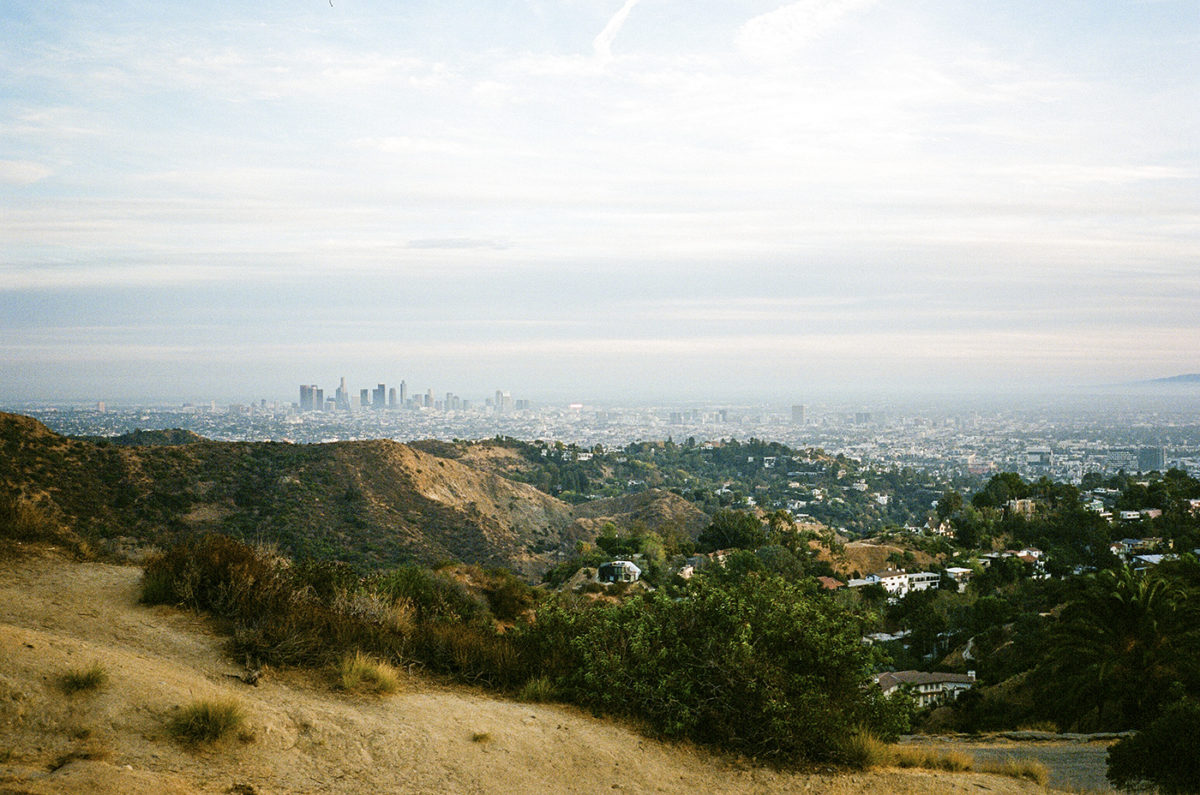Opinion: Efforts to promote environmental sustainability must continue post-pandemic

The COVID-19 pandemic led to a drop in CO2 emissions, but this could change as traditionally polluted cities like Los Angeles reopen. To prevent a catastrophic rise in emissions, we should implement changes that will ensure everyone can breathe clean air. (Caden Fincke/Daily Bruin)
By Victoria Rodriguez
May 31, 2021 12:13 p.m.
This post was updated May 31 at 6:13 p.m.
It’s possible for California to have fresh air without the influence of a global health crisis.
At the beginning of the COVID-19 pandemic, people were confined to their homes and nonessential travel came to a halt. By April 2020, daily global carbon dioxide emissions had decreased by 17% from the last year. Surface-level transportation was a factor in this resultant decrease in carbon dioxide emissions. The drop in carbon dioxide emissions has huge implications for Los Angeles, which is ranked first in high ozone days and fourth in annual particle pollution among more than 200 of the nation’s metropolises. Cars and trucks account for a whopping 33% of the county’s greenhouse gases.
But as COVID-19 infection rates drop and the economy slowly reopens, experts predict carbon dioxide emissions will soar. The International Energy Agency reports that 2021 will likely see the second-largest recorded rise of global emissions, causing severe heatwaves and impacting wildlife.
Moving forward, new patterns of engagement with our urban areas are crucial for improving our air quality. This is not a one-size-fits-all dilemma. We need to create new avenues of critical planning and strategies that will help us create long-lasting solutions.
A pandemic should not be the sole reason our environment is clean.
We all should actively do our part to tackle climate change and promote sustainability. That starts with applying the lessons we learned in 2020 to create transformative solutions that will tackle the world’s most pressing problem.
One thing we can try is instituting a hybrid model of learning and work for students and laborers.
Yifang Zhu, a professor of environmental health sciences at the UCLA Fielding School of Public Health, said we can use the pandemic to gain a new perspective on how we work and commute by finding equitable ways to incentivize sustainable options.
“Telework (after COVID-19) is really important, and this is something that society as a whole can reflect on to bring multiple benefits from an air quality perspective and from a climate change perspective,” Zhu said. “It is really helpful to improve overall sustainability in our city, in the state and in the nation.”
A hybrid model can allow for flexibility in everyday life while cutting down on personal automobile transportation, Zhu added.
And in Southern California, that will make a noteworthy difference.
The typical SoCal employee drives an average of 21 miles for their work commute. Transitioning to a three-day virtual workweek could lower that drive to 60 fewer miles per week and may bring carbon emission levels down with it.
A hybrid situation can also benefit commuting students like Brittany Montaño, who commutes more than 30 miles to UCLA from Long Beach.
“I remember I had a question for a research paper and I had to go all the way to campus just for that day because it was office hours,” said Montaño, the founder of the Bruin Commuter Student Association and a fifth-year history and labor studies student.
Keeping Zoom as a secondary option could allow students who commute to skip the time-consuming and environmentally unfriendly trip to campus. Hybrid options would also allow students who cannot afford expensive housing in Westwood to live farther away and avoid commuting to campus every day.
Along with the hybrid model, the focus of everyday travel should shift to alternative modes of transportation. For Los Angeles, this means improving a public transit system that can often be inaccessible for students.
Michael Manville, an associate professor of urban planning, supports public transportation in Los Angeles. Shifting the stigma around public transit by making it more effective and less of a hassle to use would encourage people to use it, Manville added.
“(Los Angeles) makes it too easy to drive and too hard to do anything else,” Manville said.
Roadways and parking lots alone consume 25% of Los Angeles County’s land, which results in higher temperatures and poor air quality. Decreasing the need for travel may pressure public officials to turn these areas into useful alternatives, such as affordable housing.
Los Angeles can work on promoting public ridership by increasing the frequency with which buses operate, which would allow more people to use them without waiting or missing transfers. Los Angeles Metro, for example, is already making headway in reforming its operations. Metro’s sustainability efforts include a 10-year plan that calls for 100% electric buses and reductions in particulate matter emissions by 62% from 2018.
Remote work and reforms to public transit do not mean humans will shift their lifestyles completely.
“The fact that someone doesn’t have to go to work doesn’t mean they don’t drive,” Manville said.
However, the goal is not to stop driving all together or to have another economic standstill to minimize air pollution. Learning from the pandemic and making changes based on what we have learned can help us move toward a cleaner future.
There should not be an ultimatum between the economy and the environment.


